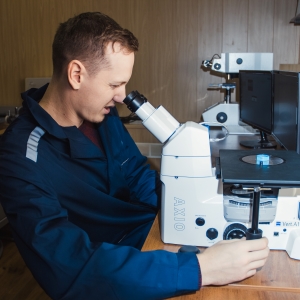Scientists from Samara University have established the correlation between the production of microdetails for modern technology and the microstructure of materials.
Researchers from the S.P. Korolev Samara National Research University conducted their study together with Taiwanese colleagues. According to the scientific team, the built model will find application in key branches of modern industry, starting from rocket engineering to medicine. The results of their study were published in the Metals journal (https://doi.org/10.3390/met12050826).
The need for micro component technology has increased in recent years due to the general miniaturization of technology, experts report. Scientists and engineers are working to find solutions to the problem of ensuring high accuracy, dimensional stability, and specified mechanical properties of devices and individual parts in this process.
In order to solve these problems, scientists from Samara Korolev University, together with their Taiwanese colleagues, have studied the technological process of microforming miniature parts for modern technology from copper alloy depending on its microstructure. The researchers evaluated the influence of initial billet grain size on the properties of the final unit and on the efficiency of individual technological operations.
"We have established and evaluated the influence of the initial metal grain size on the gradient of properties and the structure of the finished part in the area of formed ribs. Now we have an analytical model with the key parameters of this technological process," Yaroslav Erisov, professor at Samara University's Department of Metal Forming, said.
The scientist emphasized that the researchers had to devise and design the necessary conditions for the experiments and solve a series of theoretical issues.
The scientist explained that the scientific team have made a special die for cold extrusion of internal finned billets (hollow cylinders with a diameter of 9 mm) with a height of 0.3 mm for the needs of the study. The different initial grain sizes in the billets were achieved by annealing - heating and holding the billets at different temperatures, the scientist explained.
"The results of our research will allow us in the future to predict the properties of the resulting details and design the creation of new ones with the desired properties," Erisov noted.
The researchers are confident that their results are of great importance for all industries that use micromechanisms. And today this is practically every sphere of activity: ranging from rocket engineering and aviation to consumer electronics and medicine.
The published results were obtained in the course of further work on assessing the influence of scale factor on metal flow during the shaping of parts with complex geometry, initiated within the framework of a joint grant of the Russian Foundation for Basic Research and the Taiwanese Ministry of Science and Technology.
The work was carried out with the participation of scientific teams from the Department of Metal Forming and the Department of Engine Production Technology of Samara University, the team from the Ishlinsky Institute for Problems in Mechanics of the Russian Academy of Sciences, as well as the foreign team from the National Taipei University of Technology.
